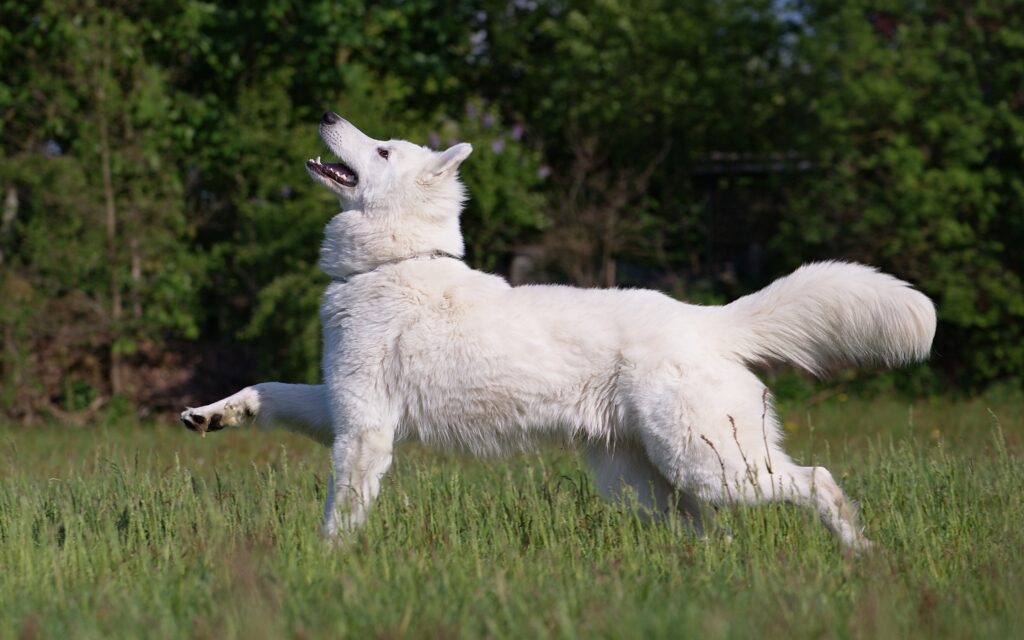Many dog behavior problems can be prevented or better managed through obedience training classes and one-on-one help from a professional dog trainer.
When dogs misbehave, they usually are trying to communicate a need that isn’t being met. Identifying the behavior and finding a way to redirect or resolve it can make a huge difference in your relationship with your dog.

1. Excessive Barking
Barking is a common dog behavior problem that can lead to frustration for owners and neighbors. The best way to deal with excessive barking is to identify the reason for it and then work to resolve it.
All dogs bark, howl, whine, or make other types of noises to communicate their feelings and needs. They use these vocalizations to alert their owners of danger, warn other animals or people, cry out for attention or just get a chance to play or be loud.
While everyone’s definition of excessive barking is different, it generally involves repeated or continuous barking for a prolonged period that can be annoying to neighbors and a distraction for owners.
This type of barking can be caused by several factors, from health concerns to stress. The first step is to determine the reason for it and then work with your veterinarian to treat any underlying issues that may be causing it.
Medical problems that can cause this kind of barking include a range of conditions from bee stings to brain disease to ongoing pain. Then, your vet will be able to prescribe medications that can help reduce or eliminate the barking.
Territorial/Protective/Alarm: This kind of barking is a defensive reaction to new people, dogs, or animals in your dog’s territory. It can be treated by limiting your dog’s access to these areas. If your dog is outdoors, keep him confined to his yard or in a fenced area that uses solid wood instead of chain fencing. For indoors, cover windows with removable plastic film or spray-based glass coatings to block the sight of people and other animals.
Frustration-induced barking: If your dog is being confined to a small area, such as a crate or bed, they may become bored and try to find something to do. You can discourage this by giving them toys to play with or treats that they can chew on.
Often, a simple reprimand, like a verbal command or a firm correction, is enough to quiet down a dog that is barking too much. But if the behavior is persistent, a professional can provide training that will help your dog learn to behave more positively.
2. Chewing
When dogs chew, it usually means they are trying to explore something. They are often doing this by chewing on their toys, stuffed animals, or other items. This can be an acceptable behavior for some dogs, but it is a problem for others, and it can also result in damage to property.
To curb destructive chewing, owners need to first understand why their dog is engaging in this behavior. Some dogs chew because of boredom, while others may be attempting to relieve anxiety or other psychological issues.
To determine why your dog is engaging in this behavior, keep a journal of their daily activity, including the time they spend chewing. This will help you to identify whether they are positively obtaining their needs or if the behavior is a coping mechanism for something else, such as separation anxiety.
Providing interactive and stimulating toys for play is also a great way to distract your dog from this destructive behavior. Several types of chew toys are available that have a variety of textures, tastes, and odors. You can also purchase chewing deterrents that have a taste or smell that your dog will find unpleasant.
You can also try training your dog not to chew certain things, such as your favorite pair of shoes or the wooden legs on a couch. If you notice your dog chewing something that you do not want it to, verbally tell them that it is not OK. Then, move your dog away or put the item down, and replace it with a chew toy.
It’s important to note that this can take a lot of repetition and practice before your dog stops chewing on something that you don’t want it to. It can take as long as six months before your dog gets the hang of this new house rule, so make sure you are patient with your pooch!
It can be tempting to try and stop your dog from chewing on a particular object, but this is not the best strategy. It is better to prevent your dog from learning the habit of chewing on these items in the first place. This can be done by putting things away in dog-proofed areas and removing them from places your dog can access.

3. Digging
Digging is a common dog behavior problem that can be triggered by a variety of different factors. It can be a sign of boredom, anxiety, or a desire to hunt for something. There are many ways to solve this issue, including training, management, and addressing any mental or emotional issues that might be behind the behavior.
Some dogs are naturally born diggers and may prefer a specific digging area that is designated for their use. This can be a great way to encourage interaction and reduce the likelihood that they will dig elsewhere in your yard.
For example, you could hide toys or treats in a specific location and then redirect them to that spot when they start digging there. This will help them develop the habit of only digging in this specific location.
Getting rid of other incentives that motivate your dog to dig may also help. For example, if they are hunting for small animals, you could ask a pest control service to get rid of the moles and other creatures living in your yard that might be tempting them to tunnel.
If you have a dog with a high prey drive, it might dig to catch and kill its prey. This is a common behavior for breeds that are bred to hunt, such as terriers and dachshunds.
Another reason that dogs might dig is to escape from a situation. They might feel anxious when they are left alone or if there is a loud noise in the house that scares them.
In these cases, it can be helpful to work with a board-certified veterinary behaviorist to determine the source of the anxiety and address it. This can be done by identifying the triggers that lead to the behavior and learning how to avoid them.
It is important to note that it can take some time and consistent effort to eliminate the digging behavior. The best thing to do is to work with a professional as soon as you notice the digging behavior so that it doesn’t become a chronic issue for your dog.
4. Jumping Up
Dogs jumping up is a behavior that can be a nuisance for both dog owners and their guests. It is also a common problem among adolescent and adult dogs.
The best way to prevent this habit from developing is to train your dog not to jump up. You can do this with the help of a professional trainer.
First, you need to understand why your dog jumps up in the first place. This will help you determine whether the behavior is a problem for your dog or not.
Many dogs jump up because they are excited. This may be the result of a good thing happening, such as a visit to dog daycare or seeing their favorite dog buddy down the street.
It can also be a response to a situation that makes them feel anxious or threatened. If you have an anxious or fearful dog, teaching them to avoid jumping up can be a great way to improve their behavior.
If your dog is a puppy or adolescent, you can encourage them not to jump up by playing games with them. Playing tag and chasing each other around the house is one of the best ways to get your dog involved in training and teach them that jumping up does not work as a greeting.
Another good way to discourage this behavior is to keep your dog on a leash when they are outside. This will ensure that they aren’t jumping up on people they don’t know, and will allow you to get down on their level and greet them properly.
The most important part of training your dog to stop jumping up is consistency. If you don’t consistently ignore your dog when they jump up, they won’t learn that jumping up doesn’t get you any attention. Once your dog understands that jumping up doesn’t get you any rewards, then they will learn to behave in other ways instead of jumping up. This is usually done by ignoring them while they are jumping up, turning away, and praising them when they sit calmly instead of jumping up.

